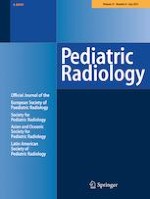Erschienen in:

18.03.2021 | Case Report
Traumatic injury to the unfused anterior arch of C1 in the setting of bipartite atlas
verfasst von:
Agnieszka Boron, Monica Epelman, Chetan Shah, Andrea Scherer, Tushar Chandra
Erschienen in:
Pediatric Radiology
|
Ausgabe 8/2021
Einloggen, um Zugang zu erhalten
Abstract
We present a case of a pediatric patient with congenital unfused anterior and posterior arches of the atlas (C1), also known as bipartite atlas, who sustained a traumatic injury during gymnastics. A computed tomography (CT) scan of the cervical spine raised concern for abnormal separation of the midline cleft of the anterior arch of C1. Subsequent magnetic resonance imaging (MRI) showed focal, edema-like signal in the midline cleft of C1. She was advised by neurosurgery to remain in a hard cervical collar for 6 weeks. She recovered after conservative treatment and returned to gymnastics. This case shows that a congenital unfused anterior arch of the atlas identified on CT after cervical trauma should not always be interpreted as an incidental finding. If a superimposed injury is suspected, MRI helps evaluate for traumatic injury, particularly if it is associated with upper cervical pain and tenderness or pain with neck movements. An additional case reiterates our findings.